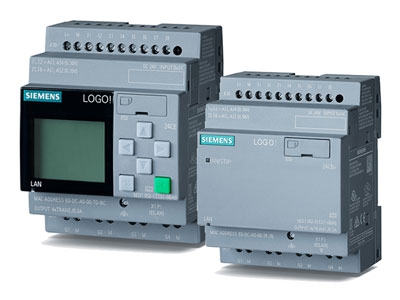What Is PLC And Scada ?
Key Takeaway
PLC and SCADA are key parts of industrial automation. A PLC, or Programmable Logic Controller, is a special industrial computer that controls machinery and processes on the factory floor. You program it to perform specific tasks, like turning machines on and off. SCADA, or Supervisory Control and Data Acquisition, is a system that monitors and controls industrial processes. It collects data from PLCs and other devices and provides a user interface to manage these processes. Together, PLC and SCADA ensure efficient and reliable operation of industrial systems, helping automate and monitor tasks, and improving overall productivity.
Defining PLC and SCADA: Purposes and Functions
PLC (Programmable Logic Controller) and SCADA (Supervisory Control and Data Acquisition) are integral components of industrial automation systems, each serving distinct yet complementary purposes. A PLC is a ruggedized computerized device used to control manufacturing processes, while SCADA systems gather, monitor, and process data from various sensors and devices. PLCs execute control logic based on programmed instructions, regulating machinery and processes, whereas SCADA systems provide operators with real-time data visualization, control, and monitoring capabilities.

How PLC and SCADA Systems Work Together
PLC and SCADA systems collaborate seamlessly to orchestrate industrial automation processes, blending real-time control with comprehensive data management. In this dynamic partnership, PLCs serve as the operational backbone, executing programmed instructions to regulate machinery and equipment in real-time. They swiftly respond to input signals, implementing precise control actions to maintain optimal process conditions.
On the other hand, SCADA systems act as the vigilant overseers, gathering data from PLCs and various sensors dispersed throughout the industrial environment. This data is then visualized through intuitive graphical interfaces, empowering operators to monitor process parameters and performance metrics remotely. SCADA systems offer a bird’s eye view of the entire industrial landscape, enabling operators to identify trends, detect anomalies, and make informed decisions to optimize operations.
Together, PLCs and SCADA systems form a harmonious alliance, each contributing its unique strengths to the automation ecosystem. PLCs provide the agility and responsiveness needed for real-time control, while SCADA systems offer comprehensive data visualization and management capabilities. This collaborative synergy ensures efficient, reliable, and agile industrial processes, driving productivity and competitiveness in diverse sectors.
You May Like to Read
Benefits of Combining PLC with SCADA in Automation
The combination of PLCs and SCADA systems brings a myriad of advantages to industrial automation processes, enhancing efficiency and productivity. By utilizing PLCs for real-time control and SCADA systems for data acquisition and visualization, organizations gain a comprehensive understanding of their operations. This integration fosters improved process visibility, allowing operators to monitor key metrics and performance indicators in real-time.
Moreover, the collaboration enables predictive maintenance capabilities, as SCADA systems analyze data trends to anticipate potential issues before they disrupt operations. This proactive approach minimizes downtime, reduces maintenance costs, and extends equipment lifespan. Additionally, the synergy between PLCs and SCADA systems facilitates seamless scalability and flexibility, empowering organizations to adapt to evolving operational needs and technological advancements effortlessly.
Overall, the integration of PLCs with SCADA systems offers a holistic solution for industrial automation, combining real-time control with comprehensive data management to optimize processes and drive business success.
Case Examples of PLC and SCADA Systems in Action
Industries across various sectors leverage the combined capabilities of PLC and SCADA systems to streamline their operations effectively. For instance, in manufacturing settings, PLCs are instrumental in controlling the intricate processes of production lines and machinery. Meanwhile, SCADA systems play a pivotal role in monitoring critical variables like temperature, pressure, and flow rates to ensure optimal process conditions and quality standards are maintained.
In utilities such as water treatment plants, PLCs regulate the operation of pumps and valves to manage the flow of water efficiently. Simultaneously, SCADA systems collect and analyze data on water quality and consumption, enabling authorities to make informed decisions regarding resource allocation and conservation strategies.
Similarly, in transportation systems like railways, PLCs are responsible for managing signaling systems and track switching operations to ensure safe and efficient train movements. Meanwhile, SCADA systems provide real-time monitoring of train positions, track conditions, and passenger information, contributing to enhanced safety and service reliability.
These examples highlight how the integration of PLC and SCADA systems enhances operational efficiency, improves decision-making processes, and ensures the seamless functioning of critical infrastructure across various industries.
Future Trends in PLC and SCADA Technologies
Looking ahead, the trajectory of PLC and SCADA technologies is poised for exciting advancements, particularly in the realms of connectivity, data analytics, and artificial intelligence. As industrial automation systems continue to evolve, one notable trend is the increasing interconnectedness facilitated by IoT technologies. This interconnectivity enables PLCs and SCADA systems to communicate seamlessly with a myriad of devices and systems, fostering a more integrated and efficient industrial landscape.
Furthermore, the integration of AI-driven analytics holds immense promise for the future of PLC and SCADA systems. By harnessing the power of artificial intelligence, organizations can leverage predictive maintenance capabilities to anticipate equipment failures and optimize maintenance schedules proactively. This proactive approach not only minimizes downtime but also enhances operational efficiency and cost-effectiveness.
Moreover, the proliferation of cloud computing technologies is expected to revolutionize the deployment and management of PLC and SCADA solutions. Cloud-based platforms offer scalability, flexibility, and accessibility, empowering organizations to remotely monitor and manage industrial processes with unprecedented ease and efficiency.
In summary, the future of PLC and SCADA technologies is characterized by a convergence of connectivity, analytics, and cloud computing, paving the way for enhanced productivity, reliability, and competitiveness in industrial automation.
Conclusion
In conclusion, PLC and SCADA systems play pivotal roles in industrial automation, offering unparalleled control, monitoring, and data management capabilities. By combining PLCs for real-time control with SCADA systems for data acquisition and visualization, organizations can achieve enhanced operational efficiency, increased productivity, and improved decision-making capabilities. As PLC and SCADA technologies continue to evolve, embracing emerging trends and innovations will be key to unlocking new levels of efficiency and competitiveness in industrial automation.
